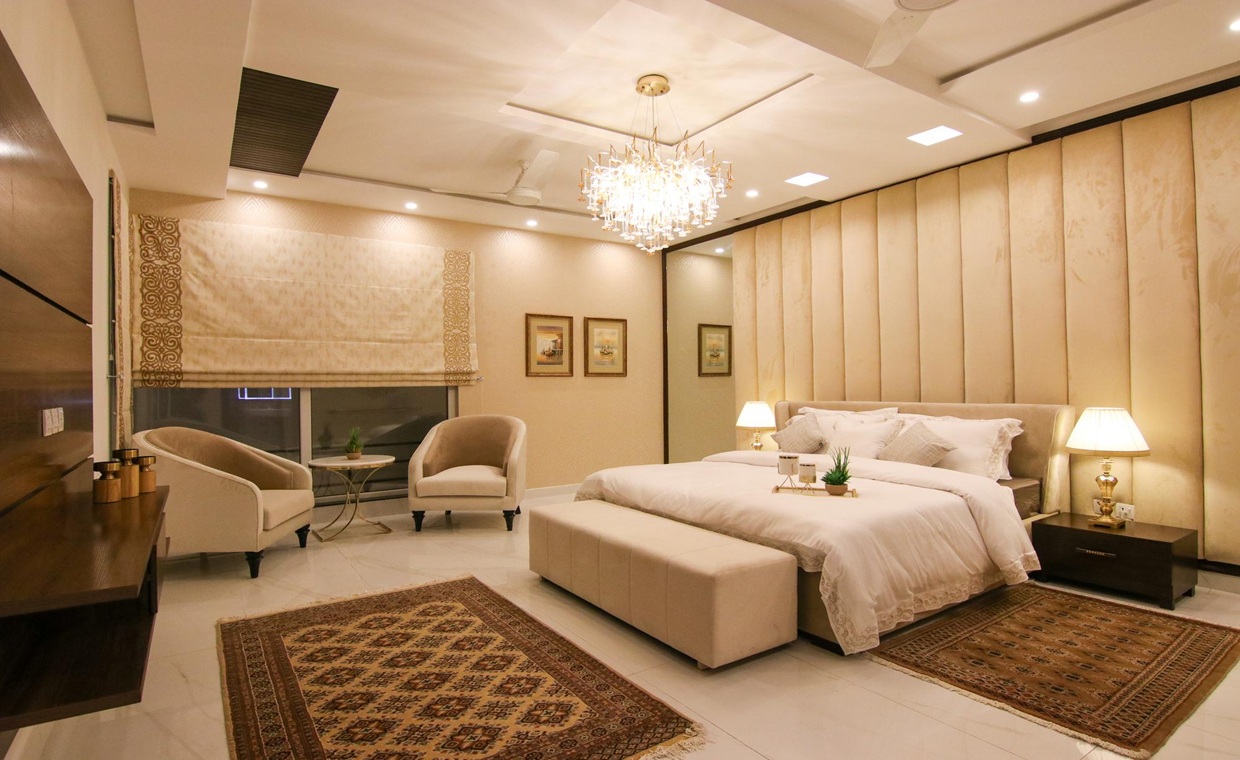
The sitting and dining spaces have been overlapping in recent times, and understanding their niche elements helps you design a perfect sitting-dining room. Here is some information on the subject. In the end, this article by Gharpedia ensures that you will be ready to give your input and discreetly divide the sitting-dining space, still retaining the harmony of the space.
Concept of Sitting-Dining Room
The large room with a dining area at one end and a sitting area at the other has been around for a long time. Large Victorian and Edwardian houses often featured folding doors between the reception rooms, which were opened up for large social gatherings. The open-plan lifestyle began in the 1960s. For many years, new houses are built with an open-plan downstairs to make them feel as spacious as possible. Recent trends in living-dining room ideas have seen the dining area become more defined, with low walls, glass bricks, and screens used to show that the room serves two different purposes.
How to Divide a Sitting-Dining Room without Separating?
The seating and eating areas should ideally complement each other, even when they are divided into separate areas. There are a number of ways to creating a multifunctional sitting-dining room, and here are five factors that you must look into:
01. Colour – Choose a Cohesive Colour Scheme
While choosing the colour for the dining end of your room, you must look at the room as a whole, which means you must take all the existing colours into account. The furniture, curtains, carpets, and paintings at one end must not look out of place with what you choose for the other. Try using the same background colour throughout and then masking off sections of the wall and painting blocks of a deeper, more intense version of the same colour.

This gives the dining area a different character while retaining a harmonious colour scheme. In fact, use the same technique for a more dramatic effect, but with blocks of contrasting colour.
02. Lighting – Combine Different Lights for Adjusting Moods
Lighting is one way of subtly separating the eating area from the seating areas. Clever lighting alone can define the different areas and make the same colour look warmer, cooler, brighter, or more faded. Table lamps, wall lights and accent lights directed at your favourite artefacts can create a relaxing atmosphere in your sitting area.

The dining table needs focused illumination for meals. For this, you can have a track of halogen spotlights, a chandelier, or a candelabra from above, depending on the furniture style.
03. Flooring – Keep it Separate yet One
One of the smartest ways of demarcating the sitting space and the dining space is to have different types of flooring. This could be linoleum or a floating wooden floor at one end and a fitted carpet at the other. If this interior design for the sitting-dining room sounds too fixed, then consider fitting one type of flooring throughout and using a large rug as the focal point in the sitting room, as shown in the image below.

04. Screening – Decorative & Functional Partition
A screen is a barrier other than a wall; it could be solid and transparent, such as a glass-brick wall, or something that you can see through, like cube shelving or a line of wooden rods.

A semi-sheer curtain on a decorative rail too makes a good screen. It can be opened to section off the dining area for special occasions and then drawn back softly. For more such screening options, check out the 35 Innovative Open Kitchen Partition Ideas.
05. Dual Purpose Dining Room Furniture and Accessories
Sitting-dining room furniture for a dual-purpose room should be light and compact. Choose a square or circular table with extra flaps or panels so that it can expand when necessary and not be too obtrusive at other times. A sideboard is ideal in a room like this because it makes it convenient to store the plates, glasses, and cutlery close to the table. After years in the furniture wilderness, the sideboard is now an absolute ‘must-have’ in contemporary homes.

Tables in sitting-dining rooms need to be lighter and more compact than those in separate dining rooms so that they are not too obtrusive over the whole area.
In a nutshell, in a sitting-dining room, we separate the sitting and dining area considering these five aspects. With the help of these cues, you can create an inviting space that combines both seating and dining seamlessly.
Also, do check out the most trending contemporary dining room at the link below.
Contemporary Dining Room Design: Key Elements for Modern Elegance
Author Bio
Huta Raval – An English Literature and Journalism Topper, Huta Raval has graduated from the L D Arts College, Ahmedabad. Post serving for 23 years in the NBFC and Public Library Sectors her desire for ‘writing the unwritten’ brought her to the creative field of content writing. Her clientele comprises of NGOs, Blogging Platforms, Newspapers, Academic Institutions, et al.






























